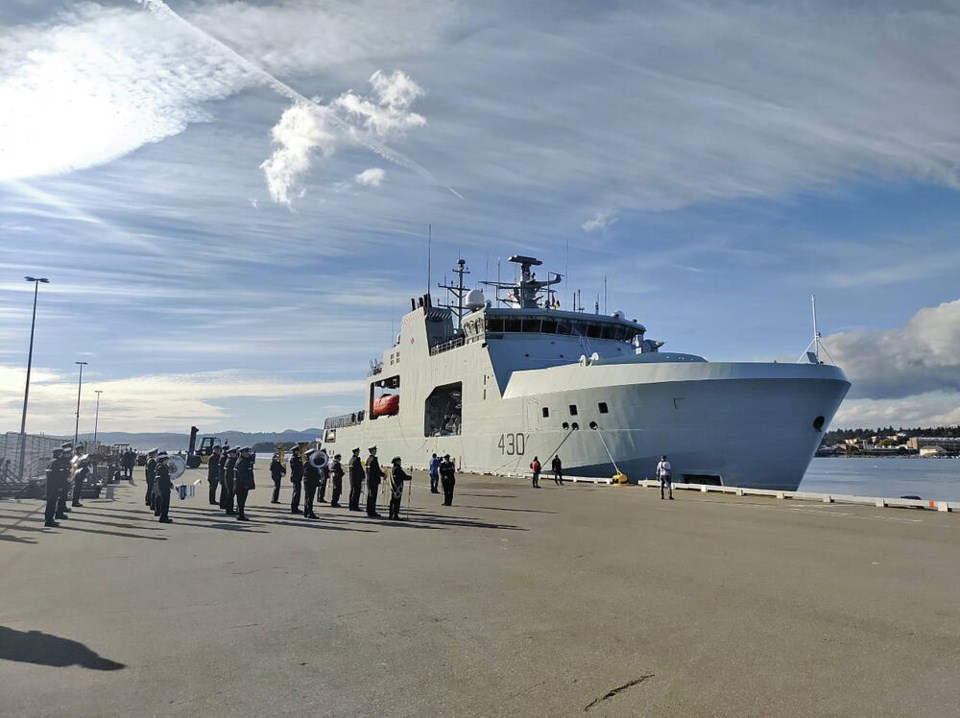HMCS Harry DeWolf — the first Canadian naval ship to cross the Northwest Passage since the HMCS Labrador in 1954 — sailed to CFB Esquimalt on Monday for maintenance.
The new Arctic offshore patrol vessel left Halifax on Aug. 3 on its maiden operational deployment and made stops at communities along its route, including Iqaluit, Pond Inlet, Grise Fjord, Cambridge Bay, Kugluktuk, Hershell Island, Prince Rupert and Vancouver before arriving at Ogden Point on Sunday.
The vessel is estimated to have travelled 10,050 nautical miles or about 18,610 kilometres.
The Harry DeWolf, which can be used as an icebreaker in the north, is one of six vessels in its class that are intended to assert Canadian sovereignty in Arctic and coastal Canadian waters and support international operations.
The 338-foot-long vessel is in Esquimalt for two weeks of scheduled maintenance. It is set to leave on Oct. 22 to participate in Operation CARIBBE, a U.S.-led counter-narcotics operation in the Caribbean Sea and the eastern Pacific Ocean. The ship will work on both sides of the Panama Canal.
After that exercise, the Harry DeWolf will continue to circumnavigate North America before returning to Halifax in early December.
The ship was built under the National Shipbuilding Procurement Strategy at Irving Shipbuilding’s Halifax shipyard.
Irving and North Vancouver’s Seaspan Shipyards won the major contracts to revitalize Canada’s marine fleet. Irving is building warships while Seaspan is constructing non-combat vessels, including the new Polar icebreaker.
The ship conducted exercises with a number of other agencies. These included the Canadian Coast Guard, Canadian Rangers, the RCMP’s marine division, Canadian Army land task forces and the Defence Research and Development Council.
The vessel is equipped with multi-role rescue boats with a top speed of 35-plus knots (about 65 km/h).



